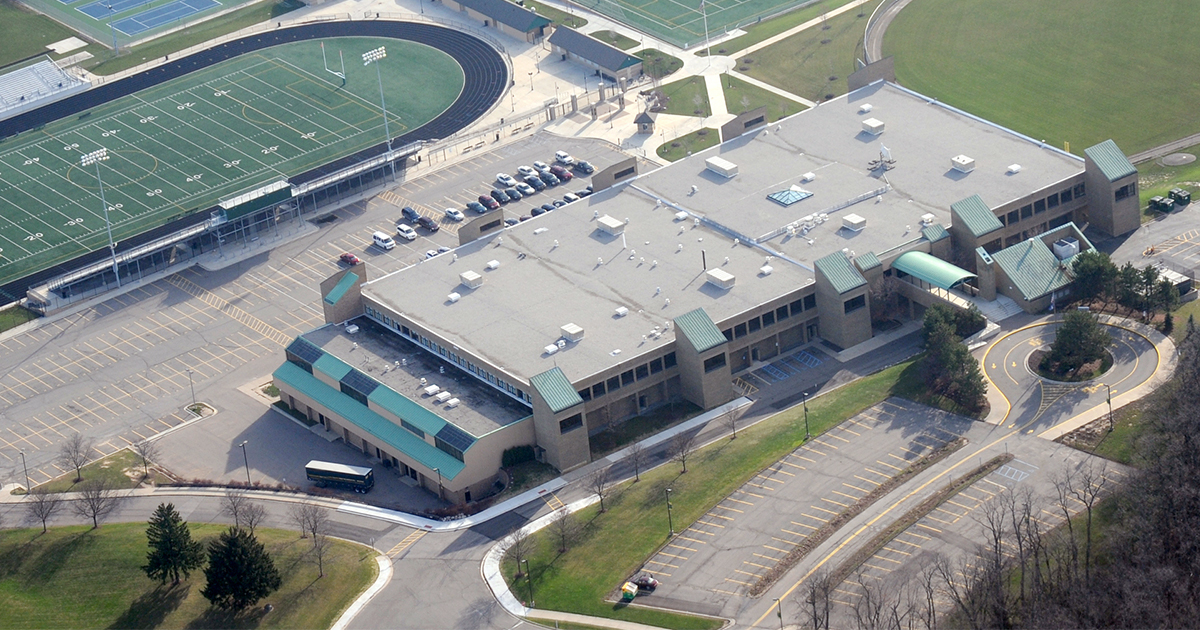
Raising the grade: Actual energy performance in secondary schools built to ASHRAE standard 90.1-2010
The days of the one-room schoolhouse are long gone. Today's school buildings are complex systems with a variety of spaces that consume energy in a lot of different ways. According to Energy Star, the nation's 17,450 K-12 school districts spend more than $6 billion annually on energy. That massive demand is also a huge opportunity to optimize energy use in our schools and prepare our nation's children for the promise of a net-zero future.
What we learned
Secondary schools built to the ASHRAE 90.1-2010 standard (or equivalent) have about 20.4% lower energy costs than buildings built to the 2004 standard.What surprised us
Facility management plays a big role in energy use — even moreso than advanced design.What's next
Future versions of ASHRAE 90.1 and other standards should add measures focused on building operations.The ASHRAE 90.1 standard establishes the minimum energy efficiency requirements of buildings other than low-rise residential buildings, which includes schools.
Researchers from Slipstream, Texas A&M University, and IMEG Corp. conducted a study to compare actual energy performance in secondary schools built to the 2010 and 2004 standards. By observing how the code affects energy use in real schools, we hoped to identify common factors to the well-performing schools versus other schools — at least in terms of energy performance. We also looked for measures to recommend in evolutions of the 90.1 standard.
This study aimed to:
- Compare secondary school national average Energy Cost Index (ECIs) between the 2004 and 2010 versions of ASHRAE 90.1, based on an analysis of monthly utility bills.
- Identify any common factors in buildings related to good (or poor) energy performance.
- Provide recommendations for future code improvements.
In many ways, this study is a companion to a 2011 simulation study by researchers at the Pacific Northwest National Laboratory, which estimated the savings from ASHRAE 90.1-2010 based on energy models and prototype buildings.
What we found
Energy use analysis: Definite savings in ASHRAE 90.1-2010
The average ECI for the secondary school buildings built to the ASHRAE 90.1-2010 standard (or equivalent) is about 20.4% lower compared to the buildings built to the 2004 standard (or equivalent).
This analysis was based on monthly utility bills from 73 school buildings and adjusted for the national average ECI. The national average EUI for ASHRAE 90.1-2010 (or equivalent) in our study is lower than that in PNNL's simulation study — about 31%. However, both studies have limitations and there are many differences in the two approaches.
Site visits: Common factors behind actual energy performance
The project team conducted site visits to eight school buildings. They found several factors that contributed to actual energy performance — but not everything was related directly to the building's design.
Simple system design and operations outperform complex system design and operations. This doesn't necessarily mean simpler is better; rather, it could that building operators need better training to understand optimal building operation and controls.
Schools with fewer large indoor spaces — such as a cafeteria, auditorium, or gymnasium -- tend to have lower EUIs and ECIs due to reduced heating and cooling loads.
LEDs are now commonplace in most schools, but well-performing buildings took advantage of advanced lighting controls.
The right zone temperature setpoints can conserve energy by keeping heating and cooling consistent. The setpoint deadband should be more than 5°F to minimize the frequency of control mode changes between heating and cooling.
For buildings with electric water heaters, well-performing buildings have both tankless and storage water heaters, as opposed to only storage water heaters.
The team observed other factors that affect energy use in schools beyond building operations. For instance, building designs should consider whether school spaces will host significant after-hour, evening, or summer activities — and thus need to stretch out operations over longer periods of time. District leadership's commitment to energy efficiency and sustainability has a noticeable effect on energy performance.
Recommendations for future standards
The full report outlines a set of recommendations for future versions of ASHRAE 90.1, including:
- Limiting zones with different orientations to minimize simultaneous heating and cooling.
- Pushing operators to adopt ASHRAE Guideline 36: High-Performance Sequences of Operation for HVAC Systems.
- Encouraging separate spaces for off-hours programming, especially in the summer period.
- Giving school teachers, staff, and students simple local control of their HVAC and lighting systems.
In the end, these transformative changes to school building codes present an opportunity to combine building operations with an education in energy efficiency. A public display of indoor environmental quality readings is just one way to help students understand how energy use relates to their daily lives.
Read the report
You can find the full report at the ASHRAE bookstore.
For the 2011 simulation study by PNNL, see:
Thornton, B.A. et al. 2011. Achieving the 30% Goal: Energy and Cost Savings Analysis of ASHRAE Standard 90.1-2010. Oak Ridge: Office of Scientific and Technical Information